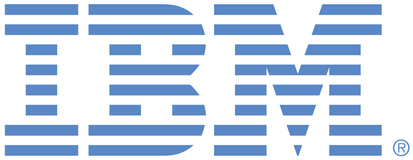Warranty Claims Processing Needs Flexibility and Enhancements
See this idea on ideas.ibm.com
In the Transportation Industry, warranty claims can generate a significant portion of operational cost coverage from Manufacturers. Annually this can total upwards of $5 to $10 million and thus it is important that the contracts with these Manufacturers, and the processing thereof, is flexible and allows for multiple factors to determine warrantable transactions.
The work order is a starting point for warrantable transactions but the current requirement that all warrantable transactions flow through a work order first without modification is too inflexible and is requiring Maximo implementers to customize the Claims process significantly, or for customers to utilize excel spreadsheets, custom applications, or manual processes outside of Maximo in order to meet their current business needs.
The enhancements needed to the Warranty Claims process include:
Enable users to select warrantable transactions in the "Generate Warranty Claims" dialogue for multiple work orders. This is needed as multiple groups and vendors may work on an asset and all would be considered a single warrantable event.
-
Enable users to add new lines to warranty claims for:
additional tasks/parts issues as those required by Manufacturer checklist depending on repair
miscellaneous claim charges allowed by Manufacturers as part of the Warranty Contract
labor and parts transactions from Technicians or Vendors for root cause analysis and troubleshooting activities that are part of allowable repair activities (could be solved if multiple work order transactions can be selected for a single Claim)
Allow users to associate a Standard Repair Time and Standard Repair Rate for a Manufacturer for pre-specified tasks and activities. This would automatically override the hours and rates charged by a Technician to what has been negotiated with the manufacturer for the same activity. This would result in a line cost based on what has been negotiated with the Manufacturer vs. what has been charged by the Technician.
From Asset/Item Warranty contracts - allow coverages to be based on VMRS codes as negotiated with Manufacturers. The primary VMRS codes to be utilized are Reason for Repair, Work Accomplished, and Parts Failure Reason. Many Transportation companies will store a Y/N flag on these VMRS codes to determine if they are warrantable or not in addition to the asset warranty coverage. The ability to designate a component code alone is not sufficient to determine if an activity is warrantable.
Campaigns should generate warranty transactions for safety recalls, even if the items/assets do not currently have active warranty contract coverage. Safety recalls must be dispositioned as a Warranty Claim by regulatory agencies even if the original asset or item warranty contract has expired. Recommend a warranty claim flag be available on the Campaign which directs this processing.
Enable users to disposition warranty candidates that they will not pursue due to contract limitations from the "Generate Warranty Claims" dialogue. This could be as simple as a "delete/trash can" on the Warranty Candidate dialogue.
Enable users to disposition warranty claim lines that have been rejected by the Manufacturer and require the entry of a rejection reason. The line cost of rejected claim line rows should be automatically deducted from the Claimed Amount on the Claims header record.
Automate the totaling of rejected and approved amounts for all lines within a Claim to display on a Header.
Enable users to capture checks and receive partial payments on the credit invoices processed from the Manufacturers.
Disable closure of a Claim record until all lines have been dispositioned as rejected or paid (approved).
Allow the capture of 3C notes (condition, cause, and correction) on work orders where warranty situations exist and make those visible on the Claim. This is necessary to allow Claims Administrators to see work notes to ensure the claim line is reimbursable.
Enable passthrough or Manufacturer override of a Claim or a parent/child relationship for bumper to bumper coverages. When assets are still under their full coverage of bumper to bumper for the asset warranty contract, the primary Manufacturer will process the claims on behalf of their suppliers and partners rather than making their customers file and manage each individually. For example, Kenworth will process all warranties for power assets under their bumper to bumper coverage, even if a specific part has failed they do not specifically cover. Currently, multiple warrantable transactions are generated for both the primary and supplier vendors and users must disposition them all to clear out the Warrantable Transaction list within "Generate Claim" dialogue box.
Develop reports to track aging Claim Lines, disposition, and payment processing.
|
Idea priority
|
Urgent
|
|
Needed By
|
Quarter
|


This idea is currently under consideration for a future release, so it is accepted but will not be delivered within the next 12-18 months. There will be a master epic created for it and many of the points contained in this single idea will generate separate epics. They will be added to the unprioritized backlog for review. Priority is based on customer need (number of unique customer votes), business/functional need (critical/regulatory change vs nice to have) as well as market need (emerging technology/philosophy).
Hi Melissa, thank you for taking the time to provide your ideas to IBM. Your request is now a candidate for a future generally available (GA) release. Our aim is to deliver within the next 12-18 months. Thank you again for your feedback.
Please note: IBM’s statements regarding its plans, directions, and intent are subject to change or withdrawal without notice at IBM’s sole discretion. Information regarding potential future products is not a commitment, promise, or legal obligation to deliver any material, code or functionality.